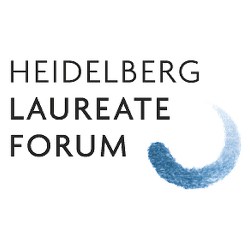
Throughout the Heidelberg Laureate Forum, there was a strong emphasis on the role interdisciplinary research may play in the future of computing. It was the focus of lectures such as Stephen Smale’s chalk talk on protein folding and Richard Karp’s inspiring presentation titled "The Computational Lens on the Sciences." As I am just starting out in my career and looking to pursue research at the intersection of computational and biomedical research, I was excited to see this type of work mentioned so often as a key future direction of the field.
For a bit of background, I have always been interested in research at the intersection between fields. I completed my undergraduate degree at Duke University in both Computer Science and Physics while spending a lot of my time doing research in Joseph Nevins’s group in the Department of Molecular Genetics and Microbiology. Before graduate school, I worked at IBM primarily on the Life Sciences Applications Team for the Blue Gene supercomputer. Wanting to have a deeper involvement in the research being done with the large-scale parallel systems, I started graduate school at Harvard University and joined Efthimios Kaxiras’s Multiscale Modeling group. At Harvard, I completed my Master’s Degree in Computer Science and my Ph.D. in Applied Physics with a secondary field in Computational Science. A few weeks ago, I started as a Lawrence Fellow at Lawrence Livermore National Laboratory. One of my research goals is to extend the hemodynamics model that I worked on with Prof. Kaxiras to study the underlying mechanisms of cancer metastasis. To this end, I am collaborating with Franziska Michor at the Dana Farber Cancer Institute in Boston. Having the ability to pursue such cross-disciplinary work has been an important factor in each career decision I have made so far. Along the way, I have been fortunate to have supportive mentors and collaborators. As I start my post doc, I am keenly aware of both how fortunate I am to be in a position that allows me freedom to set my research goals and that it’s only a three-year position. Looking at the next step raises questions like which department I fit into. Would this research be housed in Computer Science? Applied Physics? Biomedical Engineering? Even now I find that it is sometimes hard to identify the right community to be publishing in and to feel like I belong in.
It was both inspiring and comforting to hear that many of the Laureates were starting to turn their interests to apply mathematical and computational approaches to disciplines like biology. The excitement behind interdisciplinary work was furthered more during the visits for young researchers to neighboring institutions. I visited the Interdisciplinary Centre for Scientific Computing (IWR) and was surprised to find out that it was founded in 1987. We were able to hear from several researchers on topics ranging from studies of Laotian tiles to modeling human gait to studying carbon uptake by seawater. Each project drew collaborators from multiple disciplines like mathematics, chemistry, computer science, and biology to formulate deep research questions that could be aided through simulation. The founding director, Willi Jäger, explained that having an experimental component was a necessary requirement for pursuit of a project. The result is that many graduate students spend part of their time in various labs. Similar to my current setup, there were examples of graduate students with a computational focus spending time sitting and working directly with cancer researchers and physicians. I was extremely impressed with the range of projects and diversity of collaborative partners. I have found that having a close connection with the experimental work that compliments my modeling research is key to creating simulations with a real impact. The setup of their coursework emphasized the need to establish expertise in a clear domain and then add a compliment. This was described as a 75-25 split. I especially liked the interaction between the groups and the acknowledgment that the underlying computational skills could be similar in each project. I have found a great deal of similarity between the work I have done in areas like blood flow modeling, wireless network modeling, and molecular docking. I appreciated that the students and researchers we spoke with were knowledgeable about the other projects being done that were outside their domain of interest.
Over the last few years, there has been a growing need for applied computational centers in the US and an emergence institutions and departments dedicated to that mission. While there are some long-standing examples in the States, institutes like the IWR serve as great examples of creating what they describe as "an interdisciplinary think tank […] with high-power parallel computers".
Between the visit to IWR, the Laureate lectures, and discussions with attendees, I left HLF excited to see what research develops and to also get back to work. Talking with the various Laureates about their interest in taking their expertise and looking into problems in biology left me excited to watch their progress. Having some of the best minds in these fields turning toward fields like neurobiology should have fascinating results. Even more than that, many of the young researchers I spoke with are shifting to look at problems that lie at traditional disciplinary boundaries. If anything else, it looks like the fields are up for exciting contributions and discoveries as many of the young researchers and the Laureates turn toward interdisciplinary research.
Amanda Randles is a Lawrence Fellow at Lawrence Livermore National Laboratory.



Join the Discussion (0)
Become a Member or Sign In to Post a Comment